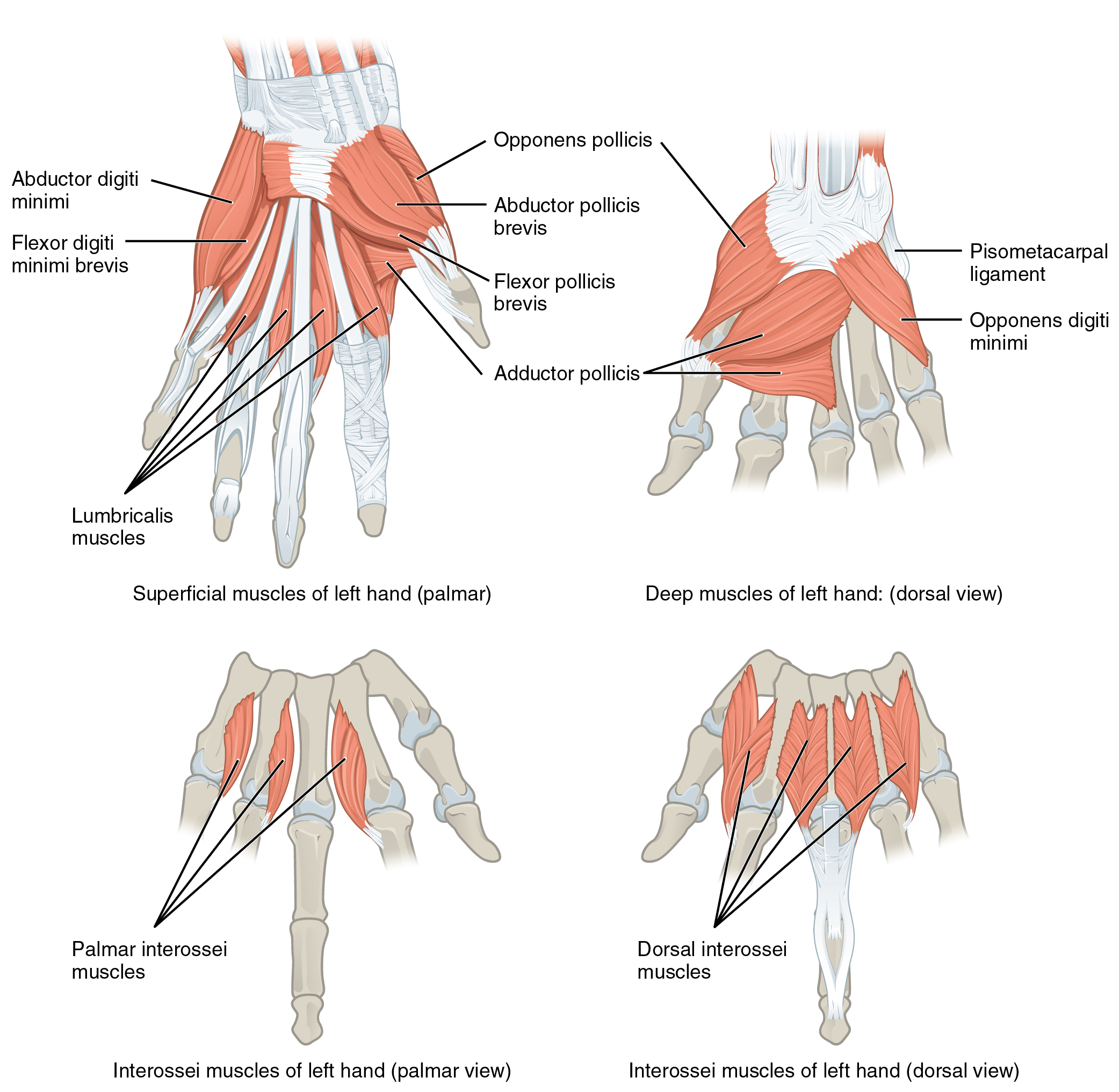Abductor Pollicis Brevis (APB)
Error processing the Excel file: 'abductor_pollicis_brevis'Origin
Insertion
Lateral side of base of 1st proximal phalanx (via radial seasamoid)3
Innervation
Recurrent Br. of Median N. (C8, T1)3 # Action {#action}
1st CMC: Abduction3
APB Strength Test for Carpal Tunnel Syndrome
“The patient is positioned in sitting with their hand supported by the clinician. The clinician asked the patient to touch the pads of the thumb and small finger together. After asking the patient to keep the pads of the thumb and small finger together, the clinician applies a strong force in order to resist thumb abduction (Fig. 18-63). A positive test is a weakness in some abduction with resisted testing as compared to the other hand. Studies performed to determine weakness in the APB are relatively consistent, demonstrating moderate diagnostic accuracy.”4
Notes
1.
Betts JG, Blaker W. Openstax Anatomy and Physiology. 2nd ed. OpenStax; 2022. https://openstax.org/details/books/anatomy-and-physiology-2e/?Book%20details
2.
Gray H. Anatomy of the Human Body. 20th ed. (Lewis WH, ed.). Lea & Febiger; 1918. https://www.bartleby.com/107/
3.
Gilroy AM, MacPherson BR, Wikenheiser JC, Voll MM, Wesker K, Schünke M, eds. Atlas of Anatomy. 4th ed. Thieme; 2020.
4.
Dutton M. Dutton’s Orthopaedic Examination, Evaluation, and Intervention. 5th ed. McGraw Hill Education; 2020.
Citation
For attribution, please cite this work as:
Yomogida N, Kerstein C. Abductor Pollicis
Brevis (APB). https://yomokerst.com/The
Archive/Anatomy/Skeletal Muscles/Upper Limb Muscles/Hand
Muscles/abductor_pollicis_brevis.html

